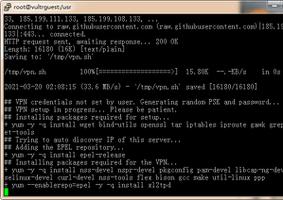Python解析配置模块之ConfigParser详解

1.基本的读取配置文件
-read(filename) 直接读取ini文件内容
-sections() 得到所有的section,并以列表的形式返回
-options(section) 得到该section的所有option
-items(section) 得到该section的所有键值对
-get(section,option) 得到section中option的值,返回为string类型
-getint(section,option) 得到section中option的值,返回为int类型,还有相应的getboolean()和getfloat() 函数。
2.基本的写入配置文件
-add_section(section) 添加一个新的section
-set( section, option, value) 对section中的option进行设置,需要调用write将内容写入配置文件。
3.基本例子
test.conf
[sec_a]a_key1 = 20
a_key2 = 10
[sec_b]
b_key1 = 121
b_key2 = b_value2
b_key3 = $r
b_key4 = 127.0.0.1
parse_test_conf.py
import ConfigParsercf = ConfigParser.ConfigParser()
#read config
cf.read("test.conf")
# return all section
secs = cf.sections()
print 'sections:', secs
opts = cf.options("sec_a")
print 'options:', opts
kvs = cf.items("sec_a")
print 'sec_a:', kvs
#read by type
str_val = cf.get("sec_a", "a_key1")
int_val = cf.getint("sec_a", "a_key2")
print "value for sec_a's a_key1:", str_val
print "value for sec_a's a_key2:", int_val
#write config
#update value
cf.set("sec_b", "b_key3", "new-$r")
#set a new value
cf.set("sec_b", "b_newkey", "new-value")
#create a new section
cf.add_section('a_new_section')
cf.set('a_new_section', 'new_key', 'new_value')
#write back to configure file
cf.write(open("test.conf", "w"))
得到终端输出:
sections: ['sec_b', 'sec_a']options: ['a_key1', 'a_key2']
sec_a: [('a_key1', "i'm value"), ('a_key2', '22')]
value for sec_a's a_key1: i'm value
value for sec_a's a_key2: 22
更新后的test.conf
[sec_b]b_newkey = new-value
b_key4 = 127.0.0.1
b_key1 = 121
b_key2 = b_value2
b_key3 = new-$r
[sec_a]
a_key1 = i'm value
a_key2 = 22
[a_new_section]
new_key = new_value
4.Python的ConfigParser Module中定义了3个类对INI文件进行操作。分别是RawConfigParser、ConfigParser、SafeConfigParser。RawCnfigParser是最基础的INI文件读取类,ConfigParser、SafeConfigParser支持对%(value)s变量的解析。
设定配置文件test2.conf
[portal]url = http://%(host)s:%(port)s/Portal
host = localhost
port = 8080
使用RawConfigParser:
import ConfigParser
cf = ConfigParser.RawConfigParser()
print "use RawConfigParser() read"
cf.read("test2.conf")
print cf.get("portal", "url")
print "use RawConfigParser() write"
cf.set("portal", "url2", "%(host)s:%(port)s")
print cf.get("portal", "url2")
得到终端输出:
use RawConfigParser() readhttp://%(host)s:%(port)s/Portal
use RawConfigParser() write
%(host)s:%(port)s
改用ConfigParser:
import ConfigParser
cf = ConfigParser.ConfigParser()
print "use ConfigParser() read"
cf.read("test2.conf")
print cf.get("portal", "url")
print "use ConfigParser() write"
cf.set("portal", "url2", "%(host)s:%(port)s")
print cf.get("portal", "url2")
得到终端输出:
use ConfigParser() readhttp://localhost:8080/Portal
use ConfigParser() write
localhost:8080
改用SafeConfigParser:
import ConfigParser
cf = ConfigParser.SafeConfigParser()
print "use SafeConfigParser() read"
cf.read("test2.conf")
print cf.get("portal", "url")
print "use SateConfigParser() write"
cf.set("portal", "url2", "%(host)s:%(port)s")
print cf.get("portal", "url2")
得到终端输出(效果同ConfigParser):
use SafeConfigParser() readhttp://localhost:8080/Portal
use SateConfigParser() write
localhost:8080
以上是 Python解析配置模块之ConfigParser详解 的全部内容, 来源链接: utcz.com/z/522614.html









